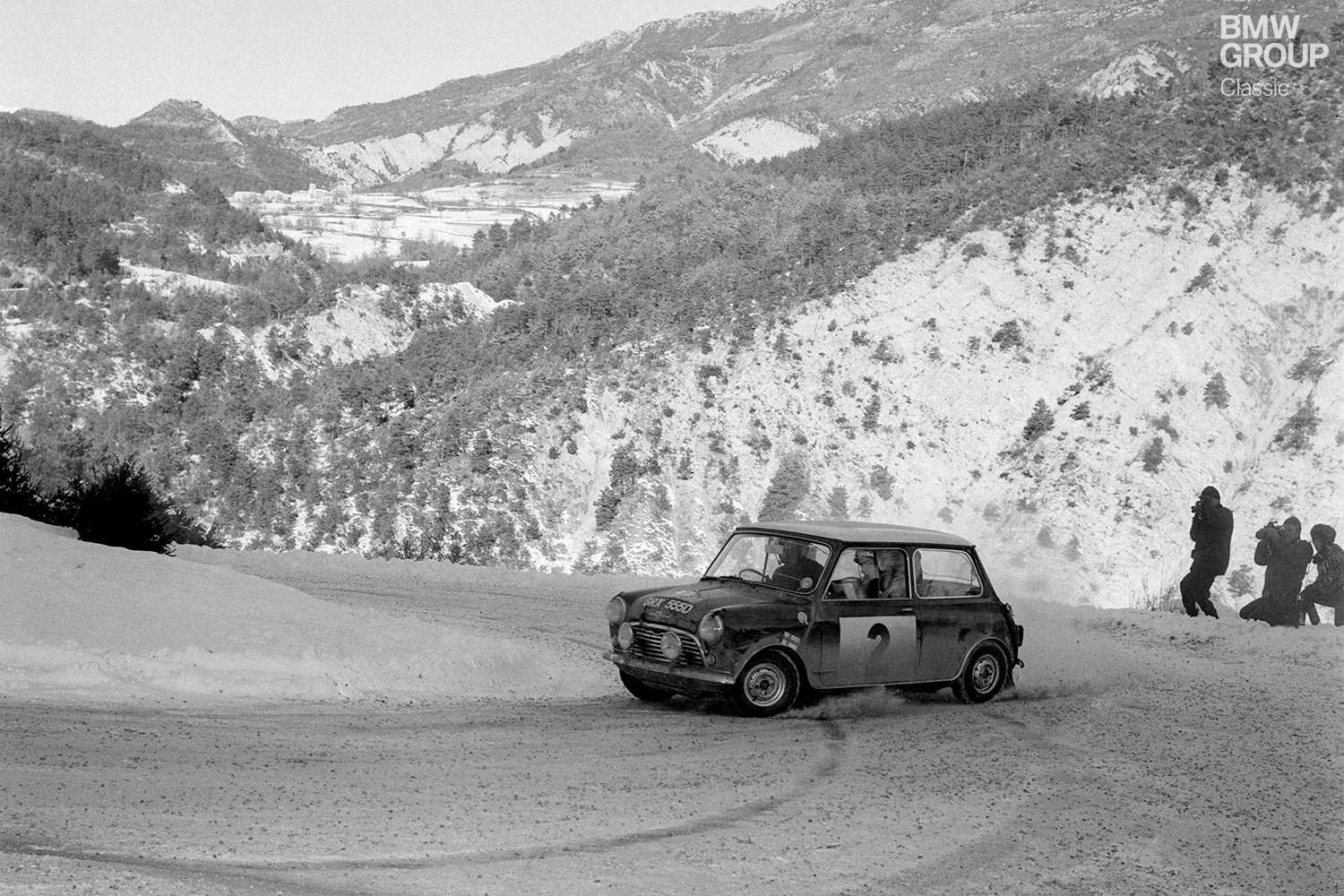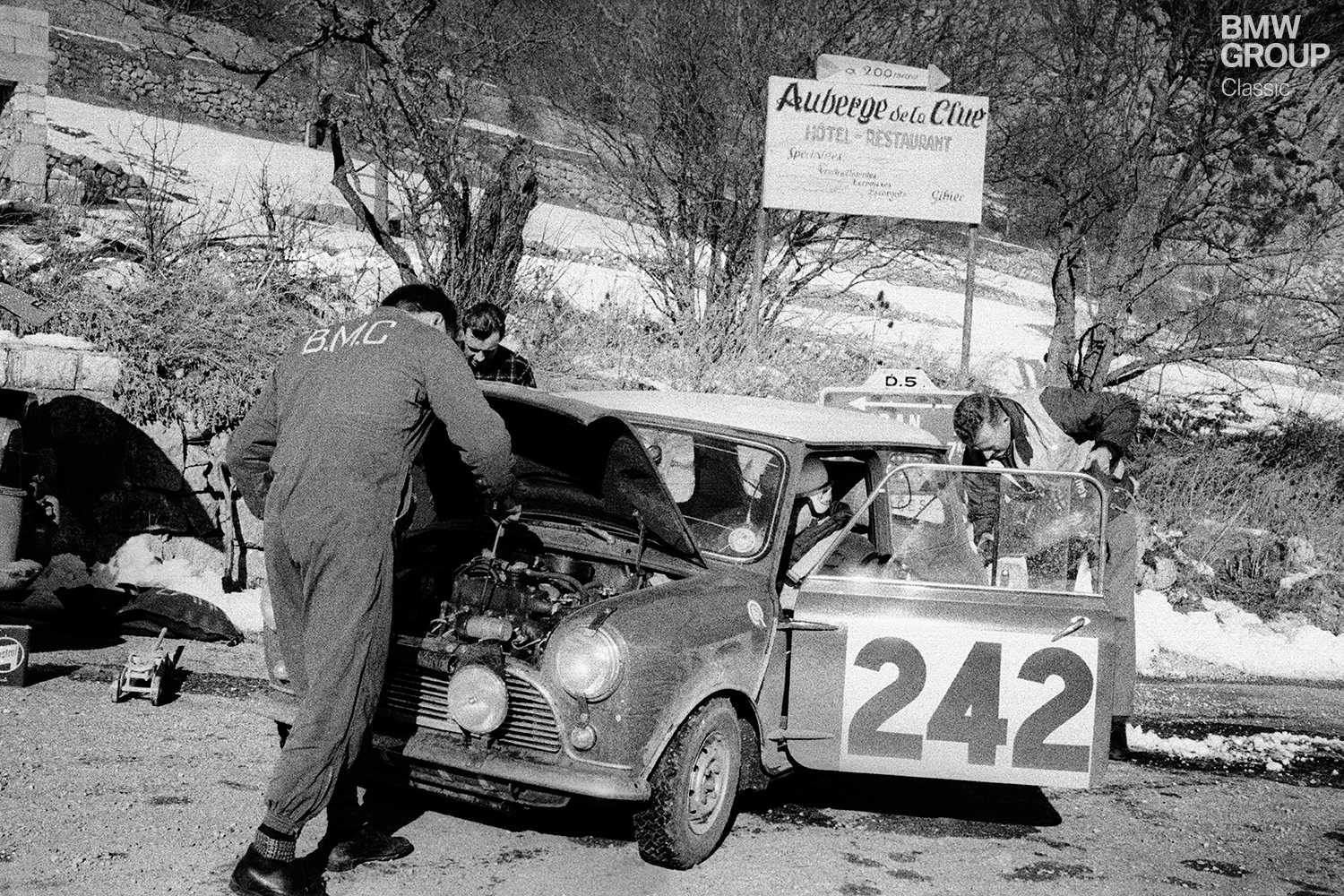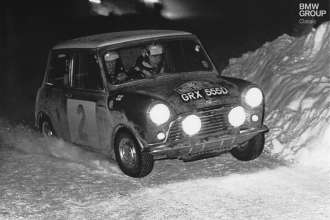It was back, a small but mighty car standing head and shoulders above the rest of the field. In January 1966 the BMC Mini Cooper picked up where it had left off after winning the two previous editions of the celebrated and legendary Monte Carlo Rally. No longer was this a new car, the classic Mini having gone on sale seven years earlier. The next stop for most models of this age would be a museum rather than a rally podium. But not the Mini; in Cooper S form it was faster than ever – and better than ever.
Then, as now, rules were everywhere in motor sport. The idea in this case was to put in place a binding framework within which technical modifications – i.e. improvements – would be permitted. Genuinely production-spec cars were no longer a viable option; the roughhouse world of car racing on tight and twisty roads turned everyday technology quickly to dust. And there was also the issue of safety. So where to draw the line between what was and was not allowed? To this day, it is a question guaranteed to raise passions.
The 1966 Monte Carlo Rally was overshadowed by a series of serious accidents in which non-participants came to grief on public roads. Back then, the rally also featured hugely long liaison stages and loops of up to 1,000 kilometres per day that competitors had to complete according to tight time scheduling. These were controversial and have long since been abolished. Drivers were compelled to put their foot to the floor and switch on the largest, most powerful bank of spotlights available once darkness fell. Oncoming drivers were duly dazzled and in one instance a car sheered off the road and tumbled 30 metres down a hillside. Although the driver emerged unhurt, the hazardous absurdity of the situation was not lost on the powers that be.
The organisers rushed to respond, sensing the need to send out a signal. The marshals were detailed to check – once, twice or even three times – the lights used by participants. It was a task they embraced warmly with the BMC Mini Cooper, even adding a fourth check for good measure. And each time they offered a thumbs-up, everything was ok. In the end, a trio of classic Minis crossed the finish line to wrap up a 1-2-3; Timo Mäkinen topped the time sheets, followed by Rauno Aaltonen and Paddy Hopkirk. But then came the message: everything was not ok after all. The Minis were disqualified, the organisers had sent their signal.
The reasons for the decision had nothing to do with the lights being too many in number, too bright or incorrectly mounted. No, the guilty party was the Minis’ dimming system, which reduced the output of the spotlights rather than switching them off when a car approached from the opposite direction. It all worked very well, but by the letter of the law, it was not allowed. No matter the crews had already been told – four times – that there was no problem.
The global press was up in arms, some hacks even going as far as to suggest that some kind of French national conspiracy was at work (after all, a Citroën had been awarded the victory). Mon dieu!
The following year, 1967, order was restored. The classic Mini won the race, complete with official approval this time, and so added a third – or should that be fourth? – victory to its collection.
On a different note: what car do you think was named the best non-front-wheel-drive entry in 1966? No, it wasn’t the sports coupé with the household name (although already in the field, that car’s golden period was still to come). In 1966 the machine in question was a quality sedan out of Munich, a BMW 1800 TI. But it still only managed sixth place overall.



